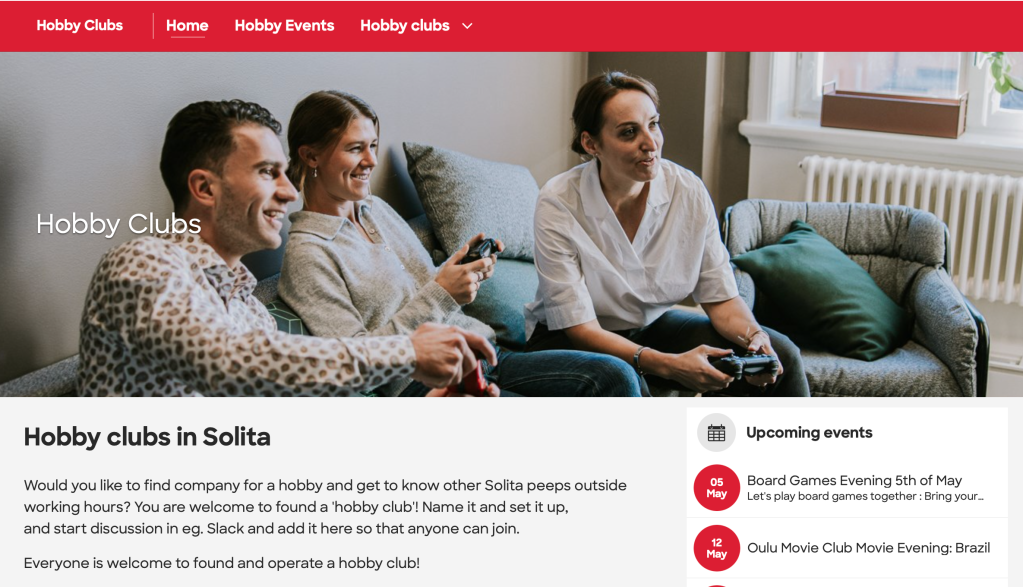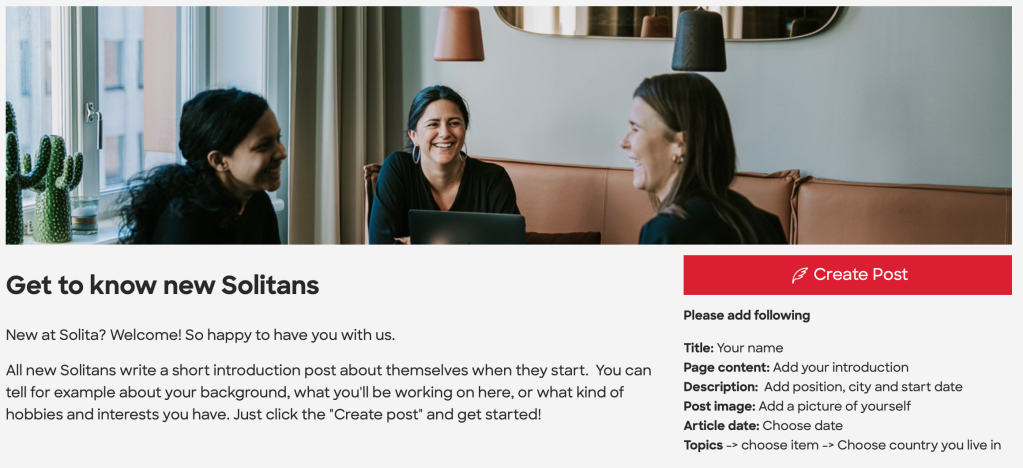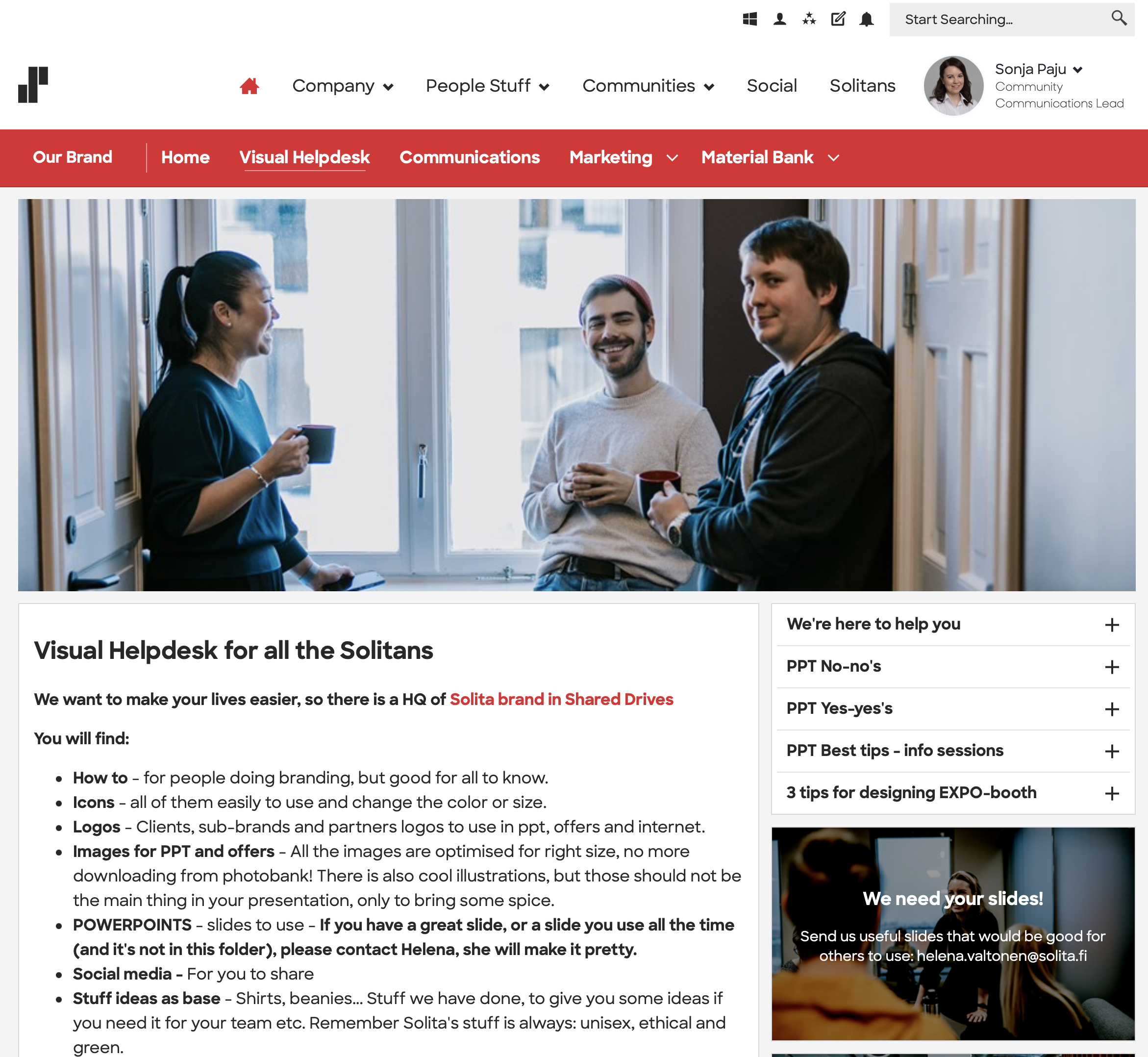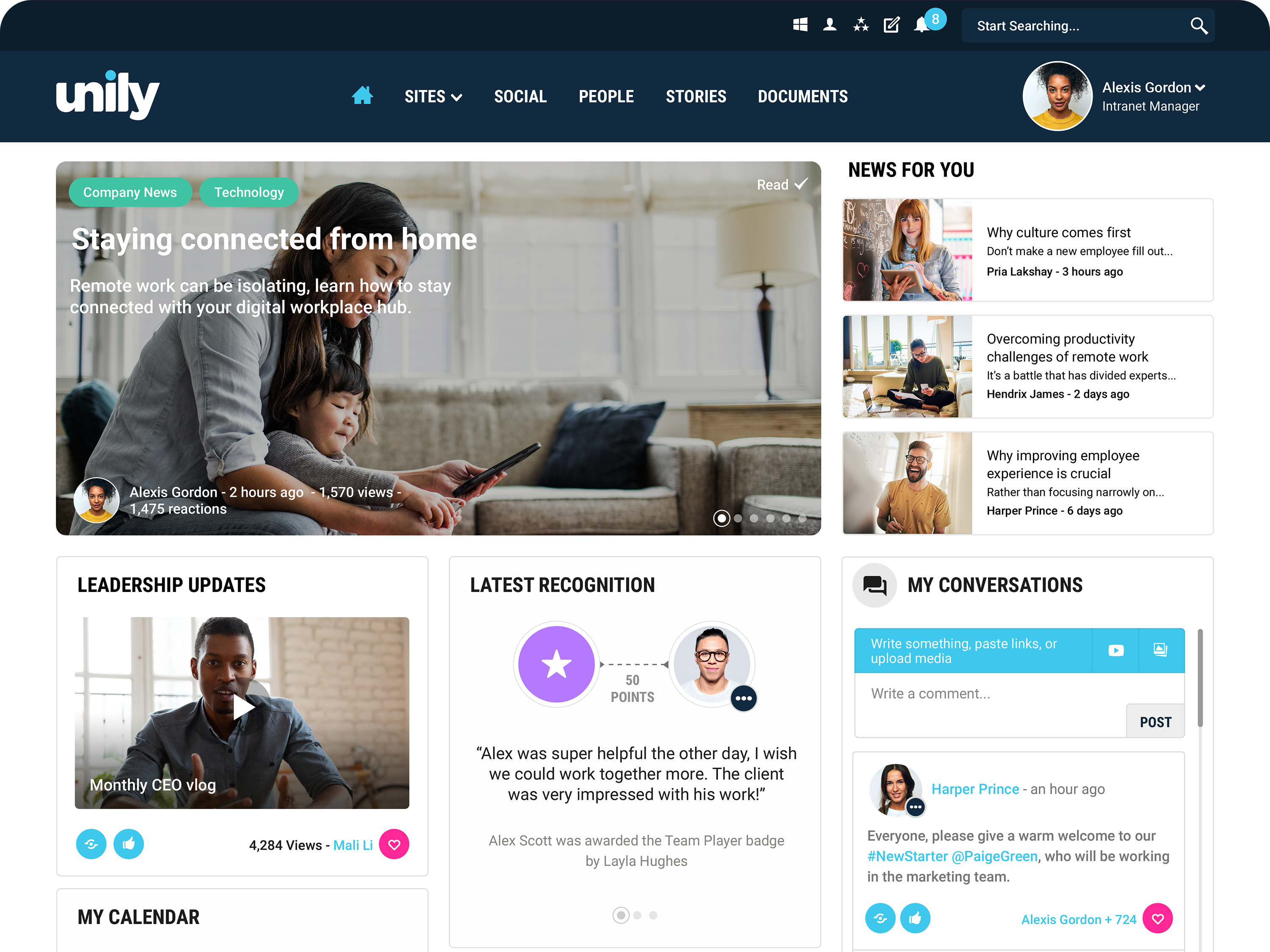A new era in workplace communication dawned for the people of Solita, when the new intranet, Insider, opened in March 2022. Insider is an intranet solution based on the Unily product, which was adjusted to meet Solita’s needs. In Finland, intranets made on existing products are rare, as Microsoft’s products are the preferred intranet tools. What is Insider like and why did Solita end up with the product, even though they have a lot of different tools and especially know-how in their organization?
North Patrol is a consulting firm specialized in the design of digital services and information systems. We shape ideas into a vision and service concept, find the best architectural and technological solutions, design a functional user experience, and compete to find the ideal partner for implementation work. We do not sell implementation projects, nor do we sell licenses; we are genuinely on the side of the customer.

Intranet to support an open and inclusive culture
Solita started the process by identifying the goals of the intranet internally at the beginning of 2021. During the same year in springtime, the company hired North Patrol to map out different options for implementing the intranet. To get to the bottom of the various options, the conceptual needs for the intranet and then the requirements for the tool itself were clarified.
The intranet must cover the official communication of the organization as well as the formal and informal communication of the communities. It must serve various professional and hobby communities in all countries, and content production must be open to everyone. The goal was for the intranet to be a content center that every staff member uses every day, which shows at a glance what is important in the work environment. The information must be found quickly and must be of high quality, reliable and up to date. Working itself and collaboration are done in other channels and with other tools than the intranet.
The vision was that in the upcoming intranet, staff members would have open discussions, get to know each other, learn from each other, share experiences and information, and encourage each other. In addition, it is necessary to quickly find colleagues on the intranet and read more than just contact information from their introductions.

"The main target groups of the intranet are all staff members. We especially wanted the new intranet to take into account the needs of people working in different countries and new employees," says Sonja Paju, who led the project.
Review of 16 products
After the conceptual definition, we moved on to identify the most important requirements for the tool, choose the intranet's technical platform and familiarize ourselves with a few options in more detail.
Solita's most important requirements for the tool were related to maintaining and updating content, using the information on a computer and mobile, and encouraging participation and user management.
"Content production was particularly important because Solita's open culture of internal communication means that every employee can create content on the intranet," explains Sonja.

North Patrol compared the requirements to 16 intranet products, three of which most closely matched Solita's needs. Interact, LumApps and Unily were introduced together through separate demo sessions, and Solita made the final choice between Interact and Unily after testing the platforms with real content.
"The prestudy project with North Patrol helped to get our thinking ready, and it helped us know what to start doing when the implementation project starts," says Sonja.
Quantitative commissioning project
The commissioning project went well because it was well-structured and defined by Unily. The five-step implementation process was punctuated by workshops and homework. The cooperation with Unily's project manager and technical expert went well but required Solita to keep the project tightly under control.
Adapting the Solita brand, customized post types, and refining the styles of the widgets required special effort in the implementation of the finished product. In addition, Solita's open organizational culture brought challenges to product customization.
"There aren't many domestic examples of intranet products, so it was difficult to get a benchmark. However, by defining a clear vision, taking into account our people, and using imagination, we managed to achieve quite a good end result", says Sonja.
Numerous Solita teams participated in building the content, and for example, the business units were responsible for their pages. Everything was done alongside other work and on a tight schedule.
"There were no automatic content migrations. Everything was built manually on the new intranet so that there would only be the content that is relevant to the people of Solita", Sonja describes the content work.
Web page-like Insider
All the effort was rewarded, as the end result looks and feels good. Insider intra has a modern look and is very website-like because the images and different content blocks rhythm the layout of the website. Different content blocks have been used sparingly, although Unily itself offers hundreds of them.
The main navigation has two levels: one contains company, employee, and community content, and the other contains quick links to various systems and programs.
"Quick links, like all content, can be targeted, for example, to employees in different countries, and users can themselves link the systems and programs they use to their menu," Sonja describes the personalization.

Picture 3: Separate and clear sections can be made for different content entities
Enthusiastic welcome
Insider was released in March 2022, five months after the project started. The new and different intranet was enthusiastically received: Insider's analytics show that almost all of the 1,300 Solitaires have visited Insider.
"Insider was immediately perceived as modern and easy to use. And what's most important - the search function was found to be working and the information is found," Sonja rejoices.
The old intranet was text oriented. Insider has invested in visuals and user experience. "The old and new intranet are so different that the change will take time," says Sonja.
After the release, development continues. So far, a handful of functionalities have been implemented. New functionalities are introduced little by little, for example, personalization of the user's news feed will be available in the near future. To keep Insider fresh, it is actively modified based on user feedback.
Sonja is satisfied with the new intranet and its implementation. Solita's communications and IT work seamlessly together, which was a key factor for the success in the project. "Without IT's strong contribution, we would have had to settle for a more modest model," Sonja praises the IT team.
"The result is really good, and the feedback from the staff members is valuable in terms of further development," says Sonja.
Considering intranet as a product?
The British company Unily can be called the Mercedes-Benz of intranet products. It includes everything you can hope for from an intranet product: content targeting according to the user, notification management, versatile social functionalities, enriched personal directories, a built-in ideation system, good search, and a clear user interface for content production, as well as plenty of options for content for presentation using widgets. As integrations, Unily promises, for example, the sharing of content to Slack and Slack views as embedded.

Implementation projects for finished products are clear, short, and fast. The product has a lot of ready-made features, from which you can choose which ones will be implemented immediately and which ones may be implemented later. With Unily you can get a SaaS product only in a few days. A broader entity can be created in a few weeks by configuring the product's features and modifying the theme.
License prices for ready-made intranet products are usually around 25–50 euros/user/year. The price of implementation typically starts at around €20,000 for a customer-specific user interface, but a part can also be implemented without implementation costs. Organizations that do not have a lot of staff in IT and communication departments get the most benefit from ready-made products.
(This article has been translated from the Finnish original. Read the original article.)
Further reading about methods used in this project


